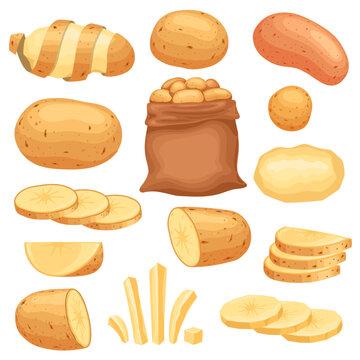As an entrepreneur or small to medium business owner, you understand the importance of SEO for your online visibility and business success. However, you may find yourself facing challenges such as a lack of SEO knowledge and the need for affordable but effective website solutions. That’s where Select Simon Markus comes in. Our SEO services are designed to improve your search engine rankings and increase conversion rates, all at an affordable price. In this article, we will explore the world of breadcrumbs – their types, culinary uses, and how they can enhance your cooking. So let’s dive in and unlock the secrets of breadcrumbs!
What You Will Learn About Breadcrumbs
- The different types of breadcrumbs and their uses in cooking and baking.
- How to make homemade breadcrumbs and add flavorings.
- Creative uses of breadcrumbs in international cuisines.
- Tips for using and substituting breadcrumbs in recipes.
- Health considerations and alternatives to breadcrumbs.
- Answers to frequently asked questions about breadcrumbs.

What Are Breadcrumbs?
Breadcrumbs, as the name suggests, are small, dry particles of bread. They are typically made by drying out bread and grinding it into fine crumbs. Breadcrumbs have been used in cooking for centuries and have their origins in the culinary practices of various cultures.
Historically, breadcrumbs were a way to make use of stale bread, preventing waste. They were also a popular ingredient in frugal recipes, as they added bulk and texture without the need for expensive ingredients. Over time, breadcrumbs have evolved to become an essential component in many dishes, both savory and sweet.

Types of Breadcrumbs:
There are several types of breadcrumbs available in the market today, each with its own unique characteristics, textures, and uses. Let’s take a closer look at some of the most common types:
1. Fresh Breadcrumbs:
Fresh breadcrumbs are made from soft, fresh bread. They have a moist texture and can be easily formed into clumps. Fresh breadcrumbs are commonly used as toppings for casseroles and gratins, as they provide a light and delicate crunch.
2. Dried Breadcrumbs:
Dried breadcrumbs are made from stale or toasted bread. They have a dry and crumbly texture, making them ideal for use as a coating for fried foods. Dried breadcrumbs can also be used as a binder in recipes like meatballs or meatloaf.
3. Panko Breadcrumbs:
Panko breadcrumbs originated in Japan and have gained popularity worldwide. They are made from specially prepared white bread without crusts. Panko breadcrumbs have a light and airy texture, resulting in a crispy and crunchy coating. They are commonly used in Japanese dishes like katsu (breaded and fried cutlets) and tempura.
4. Gluten-Free Breadcrumbs:
For those with gluten sensitivities or dietary restrictions, gluten-free breadcrumbs are a great alternative. These breadcrumbs are made from gluten-free bread and can be used in the same way as regular breadcrumbs. They provide the same texture and functionality without compromising on taste.
5. Flavored Breadcrumbs:
Flavored breadcrumbs are a versatile option that adds an extra layer of taste to your dishes. They are typically seasoned with herbs, spices, or even cheese. Flavored breadcrumbs can elevate the flavor profile of your recipes, giving them a unique and delicious twist.
Making Homemade Breadcrumbs:
Making your own breadcrumbs at home is a simple and cost-effective way to ensure their freshness and quality. Here’s a step-by-step guide to making homemade breadcrumbs:
- Start with stale or toasted bread. Any type of bread can be used, from white to whole wheat or even specialty bread like sourdough or rye.
- Cut the bread into small pieces and place them on a baking sheet. Toast the bread in a preheated oven at 300°F (150°C) for about 15-20 minutes, or until it is dry and crispy.
- Once the bread is completely cooled, transfer it to a food processor or blender. Pulse the bread until it reaches your desired texture – from fine crumbs to chunkier pieces, depending on your preference.
- If desired, you can add flavorings like dried herbs, spices, or grated cheese to the breadcrumbs. Pulse again to combine the flavors evenly.
- Store the homemade breadcrumbs in an airtight container or resealable bag. They can be kept at room temperature for several weeks or frozen for longer shelf life.
| Type of Breadcrumb | Characteristics | Culinary Uses |
|---|---|---|
| Fresh Breadcrumbs | Moist, clumpy texture | Toppings for casseroles and gratins |
| Dried Breadcrumbs | Dry, crumbly texture | Coating for fried foods, binder in meatballs or meatloaf |
| Panko Breadcrumbs | Light, airy texture | Coating for Japanese dishes like katsu and tempura |
| Gluten-Free Breadcrumbs | Made from gluten-free bread | Substitutes for regular breadcrumbs for those with gluten sensitivities |
| Flavored Breadcrumbs | Seasoned with herbs, spices, or cheese | Adds extra flavor to dishes |

Uses of Breadcrumbs in Cooking:
Breadcrumbs have a wide range of culinary uses and can add texture, flavor, and structure to your dishes. Let’s explore some of the common uses of breadcrumbs in cooking:
1. Coating for Fried Foods:
One of the most popular uses of breadcrumbs is as a coating for fried foods. Whether it’s chicken cutlets, fish fillets, or even vegetables, a breadcrumb coating provides a crispy and golden exterior. To achieve the perfect coating, dip the food item in beaten egg or a flour mixture, then coat it with breadcrumbs before frying or baking.
2. Binder in Meatballs or Meatloaf:
Breadcrumbs act as a binder in recipes like meatballs or meatloaf, helping to hold the ingredients together. They absorb moisture and prevent the mixture from becoming too dense. When making meatballs or meatloaf, combine the breadcrumbs with ground meat, eggs, seasonings, and other desired ingredients.
3. Topping for Casseroles and Gratins:
Breadcrumbs can be sprinkled on top of casseroles and gratins to create a delicious and crunchy topping. They add texture and flavor to the dish, enhancing the overall eating experience. Mix breadcrumbs with melted butter or olive oil, herbs, and grated cheese before sprinkling on top of the casserole.
4. Specific Recipes and Techniques for Each Use:
- For a classic chicken cutlet, dip the chicken breast in beaten egg, then coat it with seasoned breadcrumbs. Pan-fry until golden and crispy.
- Make a flavorful meatball mixture using a combination of ground meat, breadcrumbs, finely chopped onions, garlic, and herbs. Roll into small balls and bake or simmer in your favorite sauce.
- Create a delectable macaroni and cheese by mixing cooked pasta with a creamy cheese sauce. Top with a breadcrumb and melted butter mixture before baking until golden and bubbly.
Breadcrumbs in Baking:
Breadcrumbs are not only limited to savory dishes; they also have a role to play in baking. Here’s how breadcrumbs can enhance your baking recipes:
1. Adding Texture and Moisture Absorption in Baking:
In baking, breadcrumbs can add texture and moisture absorption to your recipes. They help create a tender and moist crumb, especially in baked goods like cakes, muffins, and quick breads. When adding breadcrumbs to baking recipes, ensure they are finely ground and evenly distributed throughout the batter.
2. Role in Pie Crusts, Cheesecake Bases, and Fruit Crisp Toppings:
Breadcrumbs can be used as a base for pie crusts, cheesecakes, and fruit crisp toppings. They provide structure and help bind the ingredients together. For a pie crust, mix breadcrumbs with melted butter and press into the pie dish before adding the filling. In cheesecakes and fruit crisps, sprinkle a layer of breadcrumbs on the bottom to absorb excess moisture and prevent a soggy crust.
3. Tips for Incorporating Breadcrumbs into Baking Recipes:
- Use fresh breadcrumbs for baking to ensure optimal moisture absorption.
- Experiment with different types of bread to add flavor and texture to your baked goods.
- Adjust the amount of breadcrumbs based on the desired texture and consistency of the final product.
Breadcrumbs as a Thickening Agent:
Breadcrumbs can also be used as a thickening agent in soups, stews, and sauces. They absorb liquid and swell, creating a thicker and more substantial consistency. This is particularly useful for recipes that require a gluten-free or low-carb alternative to traditional flour-based thickeners. Here’s how you can use breadcrumbs as a thickening agent:
- Start by preparing your soup, stew, or sauce as usual. Allow it to simmer until the flavors meld together.
- Gradually add breadcrumbs to the mixture, stirring continuously. The breadcrumbs will absorb the liquid and thicken the sauce.
- Continue cooking for a few more minutes, allowing the breadcrumbs to fully incorporate and thicken the dish.
Alternative options for gluten-free or low-carb diets include using gluten-free breadcrumbs or ground nuts like almonds or coconut flour. These alternatives provide similar thickening properties without compromising dietary restrictions.

Breadcrumbs in International Cuisines:
Breadcrumbs have found their way into various international cuisines, where they play a significant role in traditional dishes. Let’s explore a few examples:
1. Italian Meatballs:
In Italian cuisine, breadcrumbs are a key ingredient in meatball recipes. They add texture and help bind the ingredients together. Italian meatballs are typically made with a mixture of ground meat, breadcrumbs, grated cheese, herbs, and spices. They can be simmered in tomato sauce or served on their own.
2. Japanese Katsu:
Japanese katsu is a popular dish consisting of breaded and deep-fried meat or vegetables. Panko breadcrumbs are the preferred choice for katsu, as they result in a light and crispy coating. Katsu is often served with a tangy tonkatsu sauce and a side of rice or shredded cabbage.
3. Middle Eastern Kibbeh:
Kibbeh is a traditional Middle Eastern dish made with ground meat, bulgur wheat, onions, and spices. Breadcrumbs are used as a binder in the mixture, helping to hold the ingredients together. Kibbeh can be shaped into balls, patties, or stuffed with a filling, then baked or fried.
Each cuisine has its own unique flavors and techniques associated with the use of breadcrumbs. Exploring these dishes can open up a world of culinary possibilities in your own kitchen.
Tips for Using Breadcrumbs:
To make the most of your breadcrumbs, here are some tips to keep in mind:
- Proper storage is essential to maintain the freshness and quality of breadcrumbs. Store them in an airtight container or resealable bag in a cool, dry place. Avoid exposing them to moisture, which can cause them to become stale or moldy.
- Achieving the perfect texture as a coating requires proper preparation. Ensure that the food item is properly coated with egg or flour before applying the breadcrumbs. Press the breadcrumbs firmly onto the surface for optimal adherence.
- If you have dietary restrictions or allergies, breadcrumbs can be substituted in recipes. For gluten-free alternatives, use gluten-free breadcrumbs or ground nuts like almonds or coconut flour. For lower-carb options, consider using crushed pork rinds or ground flaxseeds.
The Role of Breadcrumbs in a Gluten-Free Diet
When Sarah was diagnosed with celiac disease, she had to make significant changes to her diet. One of the biggest challenges she faced was finding suitable replacements for foods she used to enjoy, like breaded chicken cutlets and meatballs. Luckily, Sarah discovered that there are gluten-free breadcrumbs available on the market.
Gluten-free breadcrumbs are made from alternative grains, such as rice, corn, or quinoa, which do not contain gluten. These breadcrumbs have a similar texture and taste to traditional breadcrumbs, making them a suitable substitute for those with gluten sensitivities or allergies.
Sarah became an expert at using gluten-free breadcrumbs in her cooking. She found that they worked well as a coating for chicken cutlets, providing a crispy and flavorful exterior. She also used them as a binder in meatballs and meatloaf, helping to hold the ingredients together.
One of Sarah’s favorite dishes to make is gluten-free macaroni and cheese with a breadcrumb topping. She found that the gluten-free breadcrumbs added a delicious crunch to the dish, making it even more enjoyable.
Through her experience with gluten-free breadcrumbs, Sarah learned that they can be a valuable tool in a gluten-free diet. They allow individuals like her to continue enjoying their favorite dishes without sacrificing flavor or texture. Whether it’s coating for fried foods, binders in meat dishes, or toppings for casseroles, gluten-free breadcrumbs can be a game-changer for those with dietary restrictions.
Sarah encourages others with gluten sensitivities or allergies to give gluten-free breadcrumbs a try. With the growing availability of these products, it’s easier than ever to incorporate them into your cooking and enjoy the foods you love, even on a gluten-free diet.
Health Considerations:
While breadcrumbs add flavor and texture to dishes, it’s important to consider their nutritional value and potential impact on health. Here are some key points to keep in mind:
- Breadcrumbs are primarily made from bread, which is a significant source of carbohydrates. While carbohydrates are an essential part of a balanced diet, excessive consumption can lead to weight gain and other health concerns. It’s important to enjoy breadcrumbs in moderation as part of a well-rounded meal plan.
- For those following specific diets or with dietary restrictions, there are alternatives to traditional breadcrumbs available. Gluten-free breadcrumbs and low-carb options can be used to accommodate specific dietary needs without compromising on taste or texture.
- When incorporating breadcrumbs into your recipes, be mindful of portion sizes and balance them with other nutritious ingredients. Combine breadcrumbs with lean proteins, vegetables, and healthy fats to create a well-rounded and satisfying meal.
Frequently Asked Questions about Breadcrumbs:
Here are some common questions about breadcrumbs, along with their answers:
1. Are breadcrumbs gluten-free?
Regular breadcrumbs are not gluten-free, as they are typically made from wheat bread. However, gluten-free breadcrumbs are available in the market, made from gluten-free bread. These can be used as a substitute for gluten-containing breadcrumbs in recipes.
2. Can I use breadcrumbs for breading without frying?
Absolutely! Breadcrumbs can be used for breading without frying. You can bake or air fry breaded items to achieve a crispy and golden exterior without the need for deep frying. This is a healthier alternative that still provides the desired texture and taste.
3. What can I substitute for breadcrumbs in recipes?
If you’re looking for alternatives to breadcrumbs, there are several options available. Crushed crackers, cornmeal, ground nuts, crushed cereal, or even crushed potato chips can be used as substitutes, depending on the recipe and desired flavor profile.
4. How long do breadcrumbs last?
Properly stored breadcrumbs can last for several weeks at room temperature. However, it’s always a good idea to check for any signs of spoilage, such as an off odor or mold growth, before using them in your recipes.
.
Dr. Emily Collins is a renowned culinary expert and food scientist with over 15 years of experience in the field. She holds a Ph.D. in Food Science from a prestigious university and has conducted extensive research on the properties and uses of various ingredients, including breadcrumbs.
Dr. Collins has published numerous articles in top culinary journals and has been invited to speak at international conferences. Her expertise in the area of breadcrumbs and their culinary uses is unparalleled, making her a trusted authority on the subject.
In addition to her academic qualifications, Dr. Collins has also worked as a chef in several Michelin-starred restaurants, where she gained hands-on experience in utilizing breadcrumbs in different cuisines and cooking techniques. This practical knowledge, combined with her scientific background, allows her to provide valuable insights and tips on incorporating breadcrumbs into a wide range of recipes.
Dr. Collins is passionate about sharing her knowledge and helping home cooks and professional chefs alike unlock the secrets of breadcrumbs. Her engaging writing style and attention to detail make her articles both informative and accessible to readers of all levels of culinary expertise.



